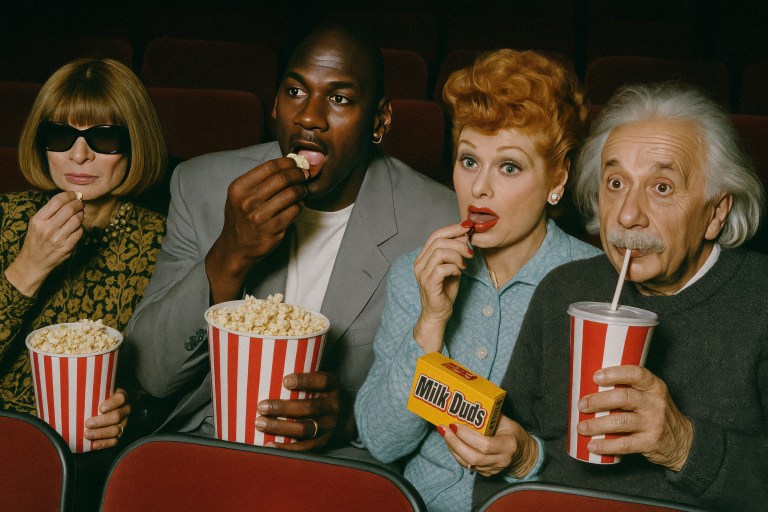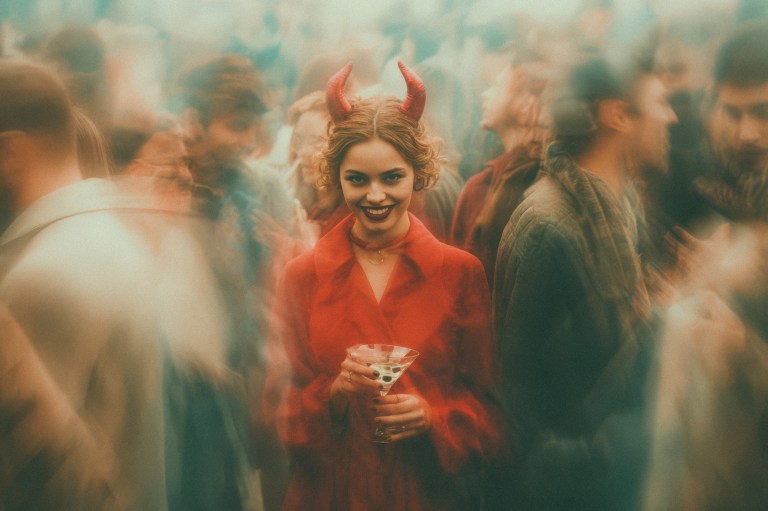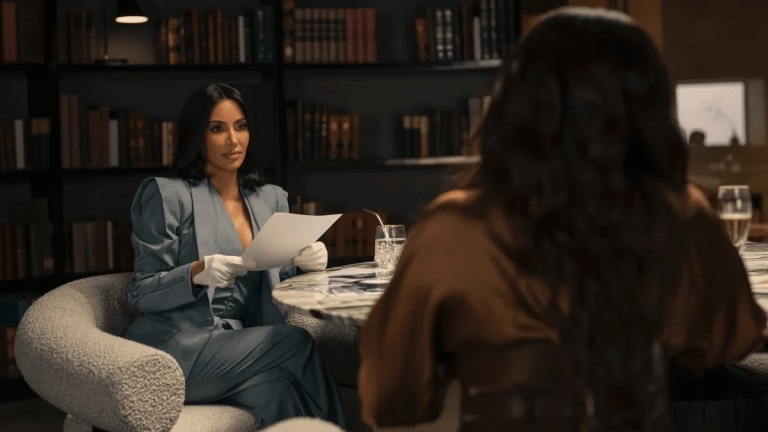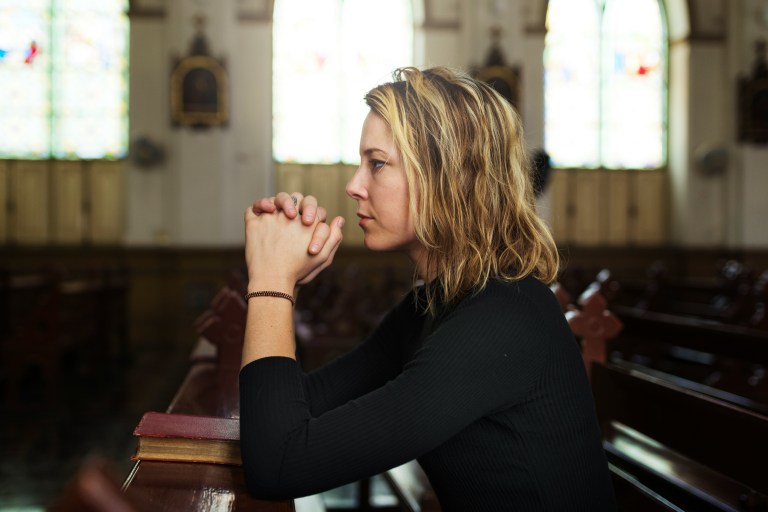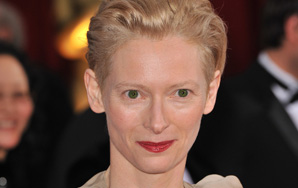
How To Dress Well: 10 Different Takes On Androgyny
I think it is important to offer options for people who want to present themselves physically without gender specifications.
Recently, I considered growing out my hair so that strangers would be nicer to me. I’m not supposed to say or think things like that, but it feels good to be honest. I don’t have any statistics on it. I can’t show you a poll that says women with long hair are treated better than women with short hair — though I’d love to see that poll. It’s just been my experience.
“You coming from the school?” the cabbie asked me. “Yup,” I tell him. It is technically true that I had just left an Upper East Side school building, but I know that is not what he means. “You play sports?” he asks, looking at me in the rearview mirror. “Sometimes,” I say. I am delaying the inevitable. This never fails. When you add short hair to my body type and clothing, the answer strangers most often come up with is: 15-year-old boy.
While that is never what I am going for when I get dressed in the morning, I don’t see gender as a binary or feel the need for the entire world to be absolutely certain about my sex at all times — so it’s totally fine with me. However, it is usually not fine with them. People can get really embarrassed when they make mistakes about these types of things. That embarrassment can often lead to resentment toward me, or worse. It’s like, yeah, why don’t I just wear a goddamn dress so the cashier who called me “sir” doesn’t feel weird?
As a queer person, I’m used to strangers (or non-strangers) being angry with me for their own weird feelings. However, in situations like these, I usually walk the socially awkward tightrope of trying to pass, for the sake of avoiding a confrontation. But, in general on an everyday basis, I’m not trying to pass for a man. I’m just trying to pass for myself. On a good day, I succeed.
There is certainly nothing, nothing, nothing wrong with someone deliberately trying to make their outside appearance match their inner gender-identity any way they choose to, whatever that identity may be. Though unfortunately for us all, too many people in this country disagree with me on that last point. And, way more than unfortunately for way too many people, I DO have statistics on that. However, that isn’t exactly how I’d label what I’m doing.
I feel comfortable in my skin, but I don’t always feel comfortable in my clothes. On certain occasions it’s like having to wear that flower girl dress at my aunt’s wedding all over again when I wanted to wear a tux. Despite living and working in New York City, I am still presented with a mixture of societal pressures, lack of options, financial constraints, and fear of judgment that limits my wardrobe in many ways. I wear pants from Gap Men and Maybelline Great Lash mascara in equal amounts (which, for the record, is both of these things almost every day). When I was nine, I brought a diagram that I had drawn on yellow legal paper to the hairdresser, because she just didn’t seem to understand from my descriptions that I wanted her to “shave –>” the underside of my head into a mushroom cut. What I now realize is, of course she did, but she wouldn’t do it because I was a girl. Six-year-old kids have been asking me, “are you a girl or a boy?” since I was their age. Masculin Féminin ain’t just a film by Godard.
Androgyny is a term derived from the Greek words (anér, andr-, meaning man) and (gyné, meaning woman), referring to the combination of masculine and feminine characteristics. This may be as in fashion, gender identity, sexual identity, or sexual lifestyle, or it may refer to biological intersex physicality, especially with regards to plant and human sexuality. – Oxford English Dictionary
So why am I stressing? This is the era of American Apparel’s neon unisex fruit salad. High-fashion designers from J.W. Anderson to Ann Demeulemeester have androgynous appeal down pat — even if some pieces cost more than a car payment. Casey Legler was signed to Ford modeling agency’s men’s division and became the first female model to exclusively model menswear LAST year. For David Bowie, Coco Chanel, Marlene Dietrich, and Prince this is all very old news. However, if I’m still feeling limited in 2013, then there must be others who are feeling even more constrained. Some walls are coming down, but let’s take them down even faster.
There is a certain modicum of mainstream acceptance for androgyny, but — as with the acceptance of all marginalized representations in the mainstream — it usually comes via compromise or a commercial co-opting (see: “boyfriend jeans”). However, in the last few years, there has also been a rise in alternative fashion options for people all over the gender spectrum. LES Downtown and Haute Butch are two lines out of a new crop of online companies tailored to queer people — especially those seeking clothing that’s more solidly either feminine or masculine. There is even a new line called “Wildfang” debuting this spring — with a slew of celebrity models in their Virgin Suicides-meets-Portlandia teaser video — that’s ready to “liberate menswear” for “tomboys.”
When I heard about veer nyc, “a start-up fashion retail company specializing in androgynous apparel curated for women, by women,” I was intrigued by their mission statement in their indiegogo video. I was interested in the clothing, sure, but I was even more curious about the concept and the experiences that led Jenny McClary and Allie Leepson to found a company that is “about more than just fashion. It’s about helping to move society forward into an age when people are free and at ease to live outside of the 2-gender structure. veer will help to expose the beauty and strength behind those of us who deviate from the “normal” path.”
I asked them to share with me their personal appearance evolutions, which are below. Jenny and Allie’s stories bookend the thoughts of other people — writers, mothers, gender advocates, fashionistas, and humans — on androgyny and androgynous fashion. This is a long read and it doesn’t even come close to covering all the different aspects of androgyny, presentation, and everything in between. It’s hard to always cover everything in between. It’s just been my experience.
Androgyny suggests a spirit of reconciliation between the sexes; it suggests, further, a full range of experience… it suggests a spectrum upon which human beings choose their places without regard to propriety or custom.” – Carolyn Heilbrun Toward a Recognition of Androgyny (1973)
1. Jenny McClary, veer nyc co-founder
I grew up in Western, MA. I spent my childhood how a boy “should” spend their childhood: climbing trees, playing sports, video games, etc. There were no dolls in my toy boxes, but I did have action figures. I also used to play this kind of “house” game with one of my brothers, but we were both men and both FBI agents. That’s when I started wanting to wear suits.
My parents bought me my own suit that I wore any chance I could. When it became awkward to wear a suit, I compensated by wearing button-ups and tucking them into my pants. I went to prep school beginning in 7th grade. I remember a girl asking me why I tucked my button up in. I lied and blamed it on my mom making me. As I tried harder to fit in with the other girls, I embraced the prep. It kind of let me wear pieces of clothing that had some characteristics of men’s clothing (ie. collars, khakis, pullover sweaters).
I came out when I was 23. It was at that point that I stopped struggling with trying to look feminine. I realized I was trying to make myself still seem feminine so that people wouldn’t think I was actually gay. My sexuality was something I struggled with my whole life.
When I was a senior in high school I had a girl hand me a letter in the locker room. In the letter, she expressed her feelings for me. It was incredibly sweet. She made sure to tell me something along the lines of ‘don’t worry; I don’t think you are gay. I just had to tell you.’ I still feel guilty to this day about how I handled that. Or lack of handled that. I ignored it in utter fear that someone had found me out as gay. That situation really affected the attention I paid to my appearance though. I figured I must have at least looked a little gay! Anyway, I got even more feminine. I went on to start college with a suitcase full of pink, push-up bras, and even some gemmed skirts. Let’s just say college sucked for me.
In the year or so leading up to my coming out, I started dressing more and more androgynous. It had a lot to do with exposure to this type of style on women (I got really into music). I slowly started buying non-feminine pieces. I would still wear them sparingly though as I was getting even more conscious about what affect it would have on people’s perception of my sexuality. When I came out, I realized I could be whoever I wanted to be physically and mentally. So, I stopped hiding behind the colors, patterns, and pieces that I thought made me appear more feminine than I actually was. It’s kind of interesting now thinking about how I associated color with femininity.
Androgyny to me means wearing clothing that doesn’t ‘scream’ masculine or feminine. Some have told me that you can’t identify as a woman, but consider yourself androgynous. I disagree, but I’d be lying if I said their comments haven’t made me question my own perception of what the word means. I have also asked myself if I should even identify as a woman, and further than that, WHY do I identify as a woman if I am sitting here rejecting femininity and traditional gender roles? I don’t have an answer other than just ‘but I do feel like a woman.’
For me though, androgyny is more about my attitude and style. I don’t think there is a “rule” for androgyny. Maybe some out there who dress without gender-specific clothing don’t identify their gender with their sex, and maybe others do. I am a woman, but I don’t dress like one “typically” does. I also don’t dress like a man though. Maybe, I exhibit different qualities of both at the same time. At least, that’s how I like to think about it. My personality would also not reflect anything stereotypically masculine or feminine.
I think it is important to offer options for people who want to present themselves physically without gender specifications. We’ve spoken to designers about pieces in their collections [for veer] that they didn’t even necessarily see as androgynous, but once we talked they recognized it. There’s absolutely nothing about any men’s clothing that should be exclusive about women… and vice versa. The big group we are trying to reach are women really in between masculine and feminine. This also leaves room for those people who do fall more left or right of center to pick and choose from our collection too! The bottom-line is we all deserve to feel comfortable and proud of how we look.
2. Gaby Dunn

I’ve always been jealous of androgynous fashion because I can’t pull it off. I had short hair (pixie cut) but it never looked “boyish” enough for me. People just thought it was a Natalie Portman thing. I wish I was brave enough to have dressed more masculine when I did have short hair. When I see like, Tilda Swinton pulling it off I’m so jealous.
3. Jess Mack, Gender Rights Advocate based in Thailand
My first memory of androgyny is Grace Jones in the 1980s. I remember being extremely compelled by her and not really sure why. My fledgling brain couldn’t really process who she was or what she was, which I think is why I loved it. The other example of androgyny that I love is Tibetan Buddhist nuns. I spent a few months with some up in northern India. Literally, tourists didn’t even know nuns existed because they look so much like men/monks. There is a really basic, raw beauty that emerges when all accessories (hair styles, makeup, clothes) are stripped away. Just a barefaced woman with a shaved head and a loose robe.
In general, I have always been interested in androgyny as a concept and as an aesthetic because of how it plays with you — it plays with your expectations of “man” vs. “woman” it plays with your assumption about what is sexy, what is sensible, and what is acceptable. I usually view women who engage in androgyny very favorably because I assume it means they have a deep level of comfort with their gender identity. That’s probably not always true, but in order to wear your/a gender as publicly flouting others’ expectation (cough, the patriarchy’s) is pretty damn sassy and feather-ruffling, and it is immediately compelling. Not to get too deep, but I think of androgyny as representing the playfulness, the absurdity, the this-and-that, that is at the very heart of reality. Life is full of twists.
Androgyny seems, to me, the truest expression of sexuality and gender for human beings, since it’s one giant nebula of contrasts, the sum of which is absolutely sensual/sexy, and real as hell. It’s actually something that we all have a part of, whether we choose to engage fully or contain it.
In Bangkok, where I live, Thai women tend to dress extremely “feminine”: long hair, heels, short frilly skirts and frilly blouses. But then the “tom” culture here — women who present as more masculine, but also are not trans (we might consider them butch, e.g.) is wonderfully androgynous. Then you have kathoeys, or what some call “lady-boys” who are men who dress/present as women — ultra-feminine, too. Heels, lots of makeup. Some are trans, some are not. I’m still trying to figure it all out myself, but it’s a really interesting environment to be immersed in. At one and the same time, it seems to me, Thai culture is extremely accommodating for a whole rainbow of gender expressions — yet is also really staunchly patriarchal. Another kind of mind-boggling contradiction.
4. Maxine Millerson, Graduate Student
I almost exclusively wear t-shirts and jeans. If I could have it my way, I would exclusively wear t-shirts and jeans. But some social occasions call for more ceremonious attire. In a perfect world, I would have a t-shirt in every shade of colour and an unlimited array of jeans to match. So: Going to the bar? T-shirt and jeans. Going to work? Slightly nicer t-shirt, and fancier jeans. A friend’s wedding? V-neck. Alas, the world is not perfect. I never felt my style was ‘androgynous’ until others suggested to me that it was.
5. Emily Rose, former Professional Shoe Guru, mother
To me androgynous fashion is simple and easy. I played soccer throughout my childhood and a good chunk of it was on a boy’s team. I don’t think I ever noticed stuff like that as a kid. I wore soccer clothes as much as possible. In high school, ugh, I could not ever get dressed up in something super feminine. It was just too damn early.
I still kind of feel like that. I wear jeans and a t-shirt with a cardigan, or boots and t-shirt. It’s just always a t-shirt. Many guys I know prefer girls that wear jeans and t-shirts. They feel like ‘girly girly’ is sometimes fake. I personally don’t agree with that though.
I love all types of fashion. I got my degree in fashion and marketing — and worked in the fashion industry for a few years. I think right now if girls dress more androgynously people generally don’t notice as much — at least in certain places. The ‘hipster’ look can be androgynous; girls wear flannels and boots and hats. Guys wear skinny jeans. My ex-boyfriend buys girls’ jeans exclusively.
I have a one-year-old daughter and I buy her clothes from the boys’ section as well as girls’, because sometimes I just want her to have a plain pair of pants. The girls’ section can be so girly. I just want her to have something without sparkles, bows, glitter, and hearts. People have come up and said to me, “He’s so cute,” and I don’t care. I don’t like pink. I don’t want her to have an overwhelming amount of pink. She has a pink sweatshirt and a pink t-shirt and it’s fine. I want her to have the experience of everything.
6. Alison Wisneski
I like to think of myself as pretty femme when it comes to dress, but then again, I say this to you as I am wearing a beanie and skinny leg cargo pants with slip on shoes. Granted, my shirt is pink and I have huge earrings, but still.
My girlfriend dresses every single day in a t-shirt, a long sleeve shirt pulled over, a bandana in her hair, jeans, and some sort of bright ass shoe, most likely made by Puma. She doesn’t identify as butch. She’s always just sort of dressed the way she does. It’s not feminine or masculine, it just is.
7. Parker Brown, Photographer
I have a boy cousin around my age and I always envied his BVDs because they had comics and cool stuff on them. I got to borrow a pair once. I don’t remember how that went down. ‘Menswear’ appeals to me, but it’s really fucking difficult to find blazers and shirts that fit right. And often I find myself shopping in the boy’s dept. Another thing that really bothers me about button-downs is when the buttons don’t go all the way up and it only ever happens in women’s shirts. I buy lots of clothes secondhand in thrift stores and I have a much better chance of scoring something that is my style and will fit that way.
8. Elias Tezapsidis, Art and Fashion Writer
The idea of adopting a particular style to appear more androgynous would annoy me just as much as the succumbing to gender-dictated fashion hetero-norms. While JW Anderson is probably too ahead of my comfort zone, I hope that we will be the ‘androgeneration,’ hopefully post-gay enough to comfortably embrace both sensitivity in men and aggressiveness in women.
9. J.E. Reich
I’ve never felt comfortable with a binary system, whether it be in regards to my public identity or my appearance to that very same public. Mining this vein, I also don’t think that my fashion choices should be dichotomous. Fashion is a second skin, and I don’t want my own second skin to be something akin to an awful metaphor involving snakes and shedding. Like my public persona, I want to be up for interpretation. Of course, there are markers that fit into a set perception (i.e. my choice to wear my hair long), but those are my particular comforts, my particular choices. I like the ephemerality that they lend me. I like being a product of my own critical analysis.
10. Allie Leepson, veer nyc, co-founder
I grew up in suburban Maryland — not too far from DC. From kindergarten through 10th grade I went to a small private Jewish school with only about 100 people in my grade. Growing up I was really into sports. Then I got a gameboy and suddenly lost interest. I think it’s safe to say that throughout all of elementary school my wardrobe rotated between gym shorts, breakaway pants, and a variety of Abercrombie t-shirts, which I thought were beyond cool — and from the boys section. Oh, and I had a pair of zip up basketball shoes. What can I say? I was pretty badass.
By the time 7th grade rolled around, we had all moved to the “upper school” on a different campus with all the older kids. We all had our bar and bat mitzvahs and everyone got really high-maintenance really fast. Of course, being a confused 13 year-old I kind of just went with it since basically every girl in my grade was like that. Then, toward the end of 8th grade/early 9th grade I started to see the light at the end of the tunnel.
Somehow during that time my friend got really into Ani DiFranco, which then lead to us discovering Le Tigre, then all those riot grrrl bands. I think that’s really when I started to figure it all out. It opened me up to this whole world of… something different. I started going to more shows and buying band t-shirts so that’s pretty much all I wore. I had a pair of bootcut American Eagle jeans and just wore those with Converse every day. I cut my hair shorter and one night my mom and I stayed up until midnight bleaching and dying the top layer of my hair blonde. Eventually, as it usually goes, I realized that I definitely did not like boys and I didn’t need to fake anything anymore.
My mom is awesome and has always been 100% supportive of all of my choices. When I had my friends put my hair in dreadlocks in 11th grade a week after getting an expensive haircut and literally just having my senior picture taken, she didn’t say a word. She was never strict about any of that stuff and never straight up told me not to do anything “bad.” By not being so crazy strict about how I looked or dressed, it let me really figure out who I am at a very early age.
It’s now a few years since I’ve graduated college and I can’t say that I’ve 100% figured it all out, but I’m getting there. Jenny and I talk about this all the time — our clothing, our style, androgyny. I mean, that’s how veer nyc started. Oh yeah, I also work full-time in a high end, multi-brand fashion photo studio. I see a lot of clothes every day.
Lately I’ve been struggling a lot with my clothing situation. I’ve been wearing a lot of button downs and flannel and it’s getting boring. I have this whole big idea of how I want to dress and look, but it’s been hard to pull it together. To me, androgyny is simplicity. I’m all about the neutral colors. I want my clothes to fit well, but not be too tight. I’ve gone from girly to grungy to “butch” back to kind of girly and so forth and so on. I think I’m finally entering the stage where I’ve figured out what I am: Androgynous. I don’t want to be seen as anything except right in the middle. I feel uncomfortable wearing tank tops and flats, and I feel uncomfortable wearing a tie and slacks.
The problem for me has just been finding what does make me feel good. I think we said this in one of our posts somewhere, but veer really started as a need. We’ve done tons of research and have found a lot of designers that are making really incredible pieces. Honestly, I’m psyched. On a personal, selfish level, I think once we buy our first collection and I can shop in our own store, I’m going to feel good.
I think a lot of people go through weird style phases growing up. I’m sure mine wasn’t out of the ordinary or anything, but I certainly did go through a lot of them! Especially in college. I think there’s definitely a thread uniting all of my weird styles and it for sure has to do with my sexuality. Throughout all of this though, I’ve always been me. My same personality has always been there. ![]()

